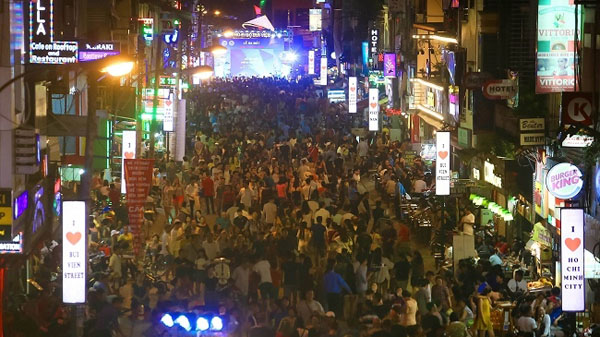


|
Thousands of people turn up on the opening day of the Bui Vien pedestrian street. This is
the second walking street in Vietnam’s southern economic hub after Nguyen Hue
Street opened in 2015.
Bui Vien
Street is pedestrianised from 7pm to 2am the next day on Saturday and Sunday,
during which no motor vehicles are allowed to travel on a
The
granite pavements along the streets were installed with stages for arts
performances as well as retail kiosks which offer a wide range of products
for visitors to choose from.
Visitors
to Bui Vien Street, located in Pham Ngu Lao Ward of District 1, also have
access to Wi-Fi services, can use public toilets and look for tourism
information free of charge.
Director
of the HCMC Tourism Department Bui Ta Hoang Vu stated that the opening of
this pedestrian street is designed to diversify the city’s tourism offerings,
attract more tourists, encourage them extend their stays and increase their
spending.
He added
that the city welcomes all feedback from tourists and will continue to make
necessary changes to meet the needs of those visiting the street.
For years
the area around Bui Vien Street has become a favourite destination of
tourists from both Vietnam and abroad, with Pham Ngu Lao Ward welcoming about
500 visitors daily to stay in its lodging facilities and up to 1,200 during
the peak season.
|